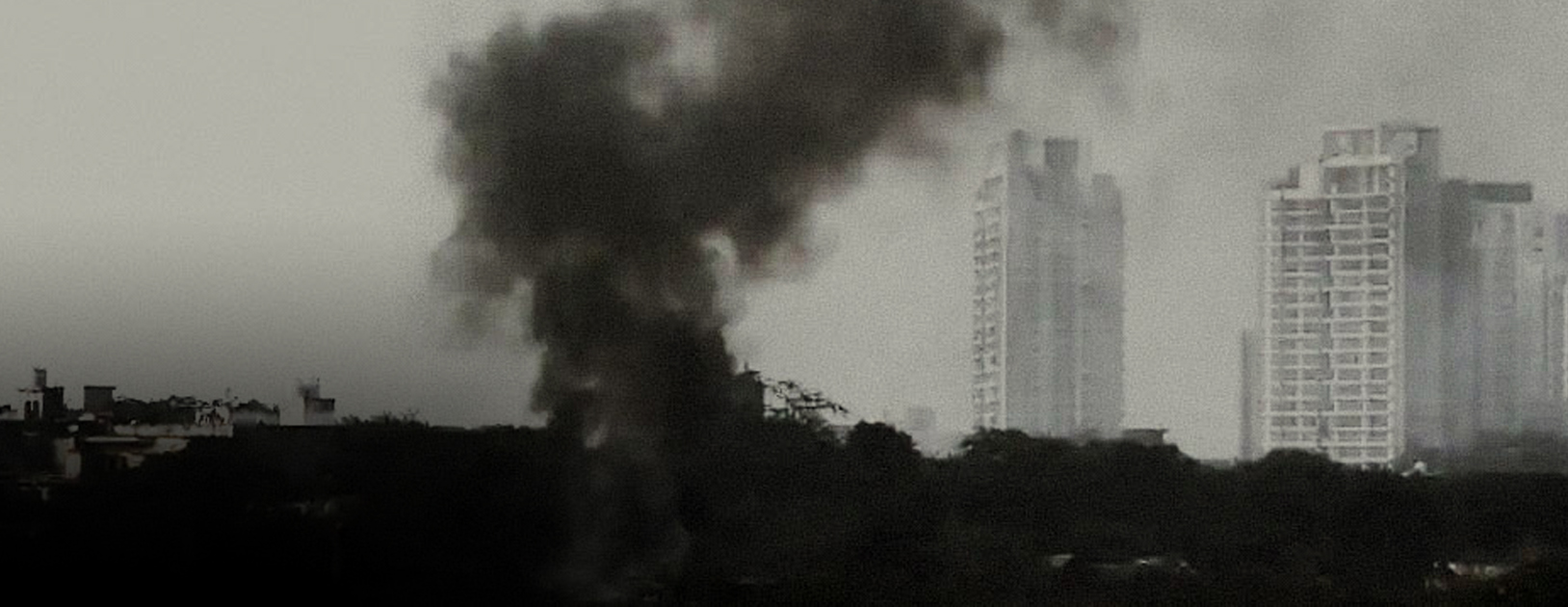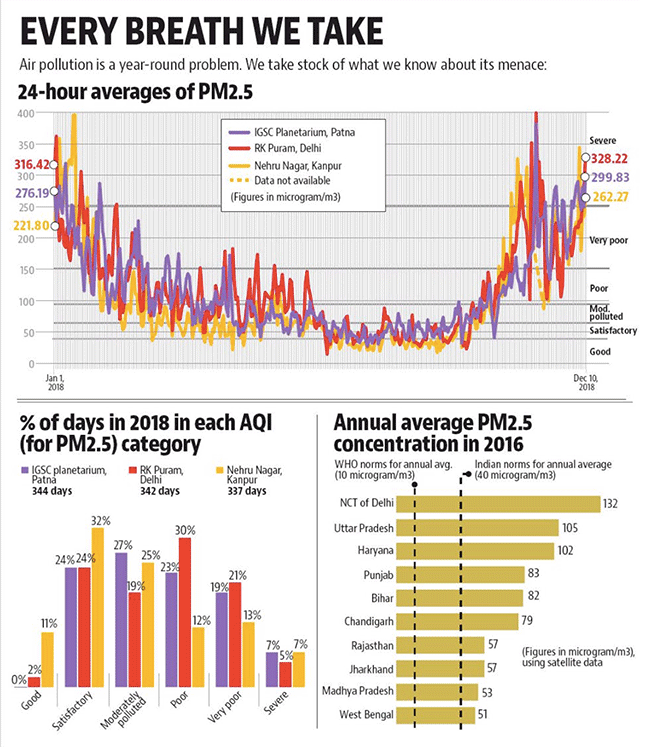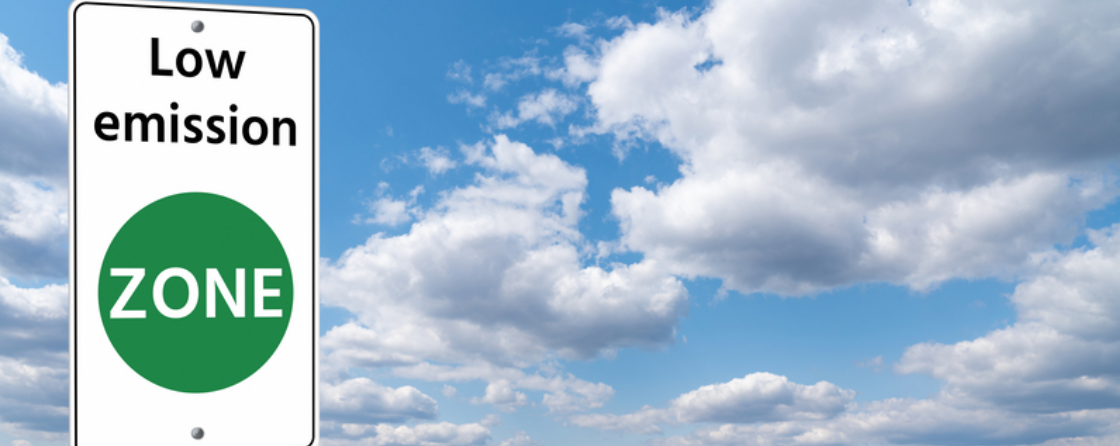Understanding the Curse of Air Pollution

THE FIRST ARTICLE IN A FOUR-PART SERIES ON INDIA’S AIR POLLUTION IN THE HINDUSTAN TIMES
AIR POLLUTION ENVIRONMENTAL JUSTICE
The quality of India’s air needs to be addressed as a pan-India public health emergency. Air pollution was responsible for 12.5% of the total deaths in 2017, as per the most recent iteration of India State Level Burden Assessment. The World Health Organization reports nearly 100,000 deaths in infants to be attributable annually to air pollution in India. But deaths form only a part of the story — there is growing evidence of how it causes illnesses in nearly every organ of our body. It affects the elderly and babies still in their mothers’ wombs – newborns show traces of particulates in their blood stream. It affects all of us.
This article is the first of a four-part series by researchers at the Centre for Policy Research written in collaboration with leading air pollution researchers. We take stock of what we know about air pollution, and what we could do to improve the air quality in India. In this series, we focus on fine particulate matter (or PM2.5), a useful proxy indicator for air pollution. These particles — a complex mixture of solid and liquid particles, originating from different sources and comprising multiple chemical substances — are the most damaging, as they can penetrate the lung barrier and enter the systemic circulation. In this article, we will lay out four foundational facts about when, how much, and where we should worry about air pollution. In short, the answers are: most of the time, a lot, and all over India.
First, air pollution is a near year-round problem, even though we notice pollution much more during periodic spikes especially in winter (see figure). Many parts of India, especially in the Indo-Gangetic belt record poor air quality levels across the year. In 2018 (so far), PM2.5 levels were ‘poor,’ ‘very poor’ or ‘severe’ 56% of the time in Delhi (RK Puram), 49% in Patna and 32% in Kanpur. Conversely, it was ‘good’ for six days in Delhi, one day in Patna and 37 days in Kanpur. While it is understandable that we focus on the visible peaks, adverse health outcomes result primarily to high long-term exposure, not just pollution spikes. To understand the severity of the problem, we have to look at annual average levels of emissions.

Second, annual average emission levels in much of India are multiple times safe levels (see figure). Three quarters of India’s population lives in areas where levels of PM 2.5 exceed the Indian national standard of an annual mean of 40 microgram/m3. These norms themselves are four times the far lower levels recommended by the WHO (see figure). Big western cities such as London, New York City and Paris have air quality nearly at these levels, and make the news when some of their neighbourhoods exceed the WHO norms by a few microgram/m3. Our levels are not just somewhat higher but many multiples higher: 72 of 640 districts in India, primarily in Delhi, UP, Bihar, and Punjab, have annual averages 10 times the WHO levels. Even Beijing, infamous for its air pollution, had PM2.5 levels about half of Delhi’s in 2016. We often hear that India suffers from inadequate data and knowledge of air pollution. While India does indeed need much better data and more sensors – much of the data reported here is from satellite data – this uncertainty should not be a reason for inaction, since new monitors will only tell us what multiple above safe standards we are.
Third, air pollution is not just a city or industrial area problem but a regional problem. Satellite data shows that air pollution levels are especially poor across the entire Indo-Gangetic Belt stretching from Punjab and parts of Rajasthan in the west to Bihar in the east. To an extent, this is a curse of geography. Sandwiched between the Himalayas in the north, and the Vindhyas in the south, this belt becomes a virtual valley where outward dispersion is difficult. Thus, while cities contribute to their own air pollution through traffic, industry, and waste burning, they are also affected by emissions from the broader regional ‘airshed’. As a result, rural areas are frequently also polluted. In addition, emissions from cookstoves using solid fuels not only lead to high levels of indoor air pollution, but also account for an estimated quarter to a third of outdoor pollution. India is dealing with both modern sources of pollution such as industries and vehicles, as well as pollution from traditional practices such as cooking with firewood, and we need to tackle both.
Finally, PM2.5 levels have been growing. Across Punjab, pollution levels nearly doubled between 1998 and 2016. It is sobering that India’s air quality is worse than China’s even while its GDP (PPP) per capita is less than half that of China. Clearly, the environmental quality of India’s growth is not sustainable.
Any serious plan to mitigate air pollution has to be long-term in nature, target multiple sources, operate year-round, and focus on regions rather than cities. In subsequent articles, we describe the impact of air pollution on health, explore the different sources of air pollution and conclude with a reflection on an approach to air pollution across India.
Santosh Harish is a Fellow at the Centre for Policy Research. Navroz K Dubash is a Professor at the Centre for Policy Research.
This article is the first in a four-part series on India’s air pollution. The original article, which was published in the Hindustan Times on December 19, 2018, can be found here. For more information on CPR’s work on air pollution, visit the Clearing the Air? project page.
In this Series:
Understanding the curse of air pollution (1/4)
Public Health in India a Casualty of Air Pollution (2/4)
Delhi Has a Complex Air Pollution Problem (3/4)
Air pollution: India’s waking up, but there’s a long way to go (4/4)




